OpenCASCADE Root-Finding Algorithm
OpenCASCADE Root-Finding Algorithm
Abstract. A root-finding algorithm is a numerical method, or algorithm, for finding a value x such that f(x)=0, for a given function f. Such an x is called a root of the function f. In OpenCASCADE math package, implemente Newton-Raphson method to find the root for a function. The algorithm can be used for finding the extrema value for curve or surface, .i.e Point Inversion, find the parameter for a point on the curve or surface. The paper focus on the usage of OpenCASCADE method and its application.
Key Words. OpenCASCADE, Extrema, Newton-Raphson, Root-Finding, FunctionRoot
1. Introduction
代数方程求根问题是一个古老的数学问题,早在16世纪就找到了三次、四次方程的求根公式。但直到19世纪才证明n>=5次的一般代数方程式不能用代数公式求解。在工程和科学技术中,许多问题常常归结为求解非线性方程的问题,因此,需要研究用数值方法求得满足一定精度的代数方程式的近似解。
我国古代宋朝数学家秦九韶在他1247年所著的《数书九章》中,给出一个求代数方程根的近似方法,这个方法一般书上都称为和纳Horner方法(英国数学家W.G.Horner)。实际上Horner在1819年才提出这个方法,比秦九韶晚五百多年。每当看到教科书中这样的介绍不知是该骄傲,还是该嗤之以鼻。古人发明创造的东西比外国人早,而现在国内用于CAD、CAM的软件大都是国外进口的,像CATIA,AutoCAD,Pro/E,UG NX,SolidWorks,AVEVA Plant/Marine,Intergraph,ACIS,Parasolid……等等不胜枚举,很少看到中国软件的身影。而这些软件广泛应用于航空、造船、机械设计制造、工厂设计等各个行业,每年的软件授权费用不知几何?衷心希望当代国人奋发作为,为世界增添色彩。
闲话少说,本文主要关注非线性方程的数值解法,重点介绍了Newton-Rophson法及在OpenCASCADE中应用,即求点到曲线曲面的极值,也就是曲线曲面点的反求参数问题。对数值算法感兴趣的读者,可以参考《数值分析》、《计算方法》之类的书籍以获取更详细信息。
2.Numerical Methods
方程求根的方法有很多,在《数学手册》中列举了如下一些方法:
v 秦九韶法;
v 二分法;
v 迭代法;
v 牛顿法Newton’s Method;
v 弦截法;
v 抛物线法;
v 林士谔-赵访熊法;
其中二分法是求实根的近似计算中行之有效的最简单的方法,它只要求函数是连续的,因此它的使用范围很广,并便于在计算机上实现,但是它不能求重根也不能求虚根,且收敛较慢。
Newton法在单根邻近收敛快,具有二阶收敛速度,但Newton法对初值要求比较苛刻,即要求初值选取充分靠近方程的根,否则Newton法可能不收敛。扩大初值的选取范围,可采用Newton下山法。
Newton’s Method的实现原理的演示动画如下图所示:
http://upload.wikimedia.org/wikipedia/commons/e/e0/NewtonIteration_Ani.gif

Figure 2.1 Newton’s Method(Newton-Raphson)
由上面的动画可以清楚理解Newton法的原理。用数学的文字描述如下:设f(x)二次连续可导,xk是f(x)=0的第k次近似解。我们用曲线y=f(x)过点(xk,yk)的切线Lk:

来近似曲线f(x)。取Lk与X轴的交点为f(x)=0的第k+1次近似解为:

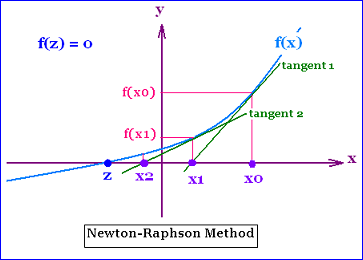
Figure 3.2 Newton-Raphson Method
其中:

称为Newton公式。
Newton法对初值x0要求苛刻,在实际应用中往往难以满足。Newton下山法是一种降低对初值要求的修正Newton法。
关于Newton方法的公开课的视频我找到网易上有节课,介绍了Newton方法的原理及用法,网址为:http://v.163.com/movie/2006/8/T/V/M6GLI5A07_M6GLLGSTV.html,在后半部分。老师用实际例子来讲解还挺有意思的,感兴趣的读者也可以完整地看看,也可复习下微积分的知识点。
3.OpenCASCADE Function Root
OpenCASCADE的math包中实现了方程求根的算法,相关的类有math_FunctionRoot,math_FunctionRoots,math_NewtonFunctionRoot等。在《Fundation Classes User’s Guide》中有对通用数学算法的介绍,即OpenCASCADE中实现了常见的数学算法:
v 求解线性代数方程的根的算法;
v 查找方程极小值的算法;
v 查找非线性方程(组)的根;
v 查找对角矩阵的特征值及特征向量的算法;
所有的数学算法以相同的方式来实现,即:在构造函数中来做大部分的计算,从而给出适当的参数。所有相关数据都保存到结果对象中,因此所有的计算尽量以最高效的方式来求解。函数IsDone()表明计算成功。如下所示分别为采用不同的算法来计算如下方程在[0,2]区间上的根:

实现程序代码如下所示:
/*
* Copyright (c) 2014 eryar All Rights Reserved.
*
* File : Main.cpp
* Author : eryar@163.com
* Date : 2014-10-20 18:52
* Version : 1.0v
*
* Description : Test OpenCASCADE function root algorithm.
*
* Key words : OpenCASCADE, Newton-Raphson, Root-Finding Algorithm, FunctionRoot
*/ #define WNT #include <Precision.hxx> #include <math_FunctionWithDerivative.hxx> #include <math_BissecNewton.hxx>
#include <math_FunctionRoot.hxx>
#include <math_NewtonFunctionRoot.hxx> #pragma comment(lib, "TKernel.lib")
#pragma comment(lib, "TKMath.lib") class TestFunction : public math_FunctionWithDerivative
{
public:
virtual Standard_Boolean Value(const Standard_Real X, Standard_Real& F)
{
F = pow(X, ) - X - ; return Standard_True;
} virtual Standard_Boolean Derivative(const Standard_Real X, Standard_Real& D)
{
D = * pow(X, ) - ; return Standard_True;
} virtual Standard_Boolean Values(const Standard_Real X, Standard_Real& F, Standard_Real& D)
{
Value(X, F); Derivative(X, D); return Standard_True;
}
}; void TestFunctionRoot(void)
{
TestFunction aFunction; math_FunctionRoot aSolver1(aFunction, 1.5, 0.0, 0.0, 2.0); math_BissecNewton aSolver2(aFunction, 0.0, 2.0, 0.0); math_NewtonFunctionRoot aSolver3(aFunction, 1.5, Precision::Confusion(), Precision::Confusion()); std::cout << aSolver1 << std::endl;
std::cout << aSolver2 << std::endl;
std::cout << aSolver3 << std::endl;
} int main(int argc, char* argv[])
{
TestFunctionRoot(); return ;
}
由上述代码可知,要想使用求根算法,必须从math_FunctionWithDerivative派生且重载其三个纯虚函数Value(), Derivative(), Values(),在这三个纯虚函数中计算相关的值及导数值即可。所以实际使用时,正确重载这三个函数是正确使用求根算法的关键。
求根用了三个不同的类,即三种方法来实现:
v math_FunctionRoot:即Newton-Raphson法;
v math_BissecNewton:是Newton-Raphson和二分法的组合算法;
v math_NewtonFunctionRoot:Newton Method;
计算结果如下图所示:
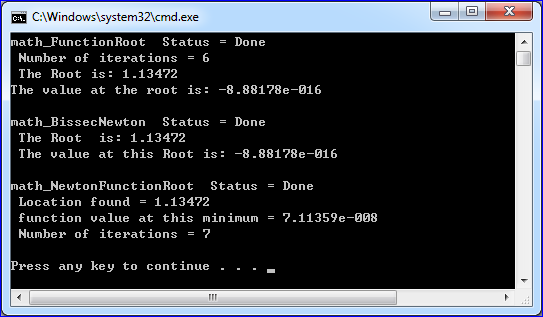
Figure 3.1 Root-Finding result of OpenCASCADE
由计算结果可知,三种方法计算的结果相同,都是1.13472,与书中结果吻合。但是math_NewtonFunctionRoot的迭代次比math_FunctionRoot多一次,且计算精度要低很多。
使用math_BissecNewton求根不用设置初始值,比较方便,精度与math_FunctionRoot一致。
4.Application
在工程和科学技术中,许多问题常常归结为求解非线性方程的问题。在OpenCASCADE中的应用更多了,从下面一张类图可见一斑:
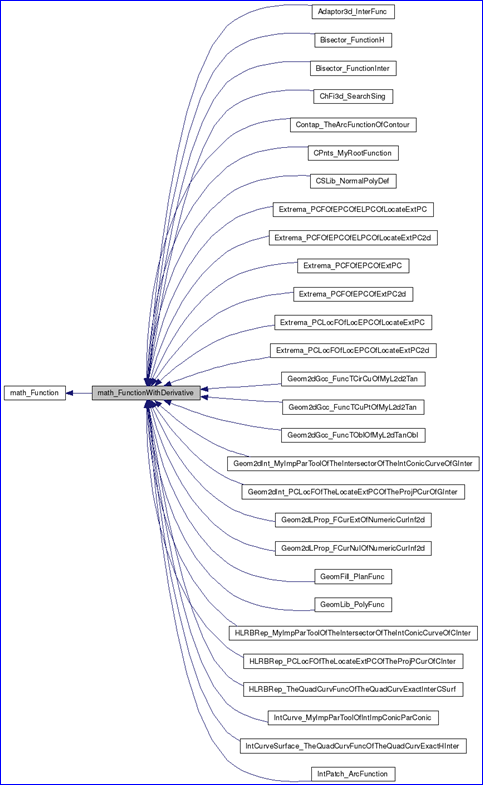
Figure 4.1 math_FunctionWithDerivative class diagram
由图可知,从类math_FunctionWithDerivative派生出了很多可导函数的类,这些函数都可用于求根的类中,从而计算出对应方程的根。
下面给出一个实际应用,即曲线曲面上点的反求问题,来说明如何应用上述求根算法来解决实际的问题。由于曲线曲面的参数表示法,通过参数u或(u,v)可以方便地求出曲线上的点或曲面上的点。若给定一个点P(x,y,z),假设它在p次NURBS曲线C(u)上,求对应的参数u’使得C(u’)=P,这个问题称为点的反求(point inverse)。在OpenCASCADE中提供了简单的函数接口来实现点的反求,使用类为GeomLib_Tool:

如何将点的反求问题归结为方程求根的问题,就要根据条件来建立方程了。一种简单并完全可以解决这一问题的方法是:利用Newton迭代法来最小化点P和C(u)的距离,如下图所示。如果最小距离小于一个事先指定的精度值,则认为点P在曲线上。这种方法有效地解决了更一般的“点在曲线上的投影”的问题。
因为方程求根的Newton方法需要指定初值u0,所以可按如下方法得到一个用于Newton法的初值u0:
v 如果已知点P在给定精度内位于曲线上,则用强凸包性确定候选的段,对于一般的点到曲线的投影问题,则选择所要的段作为候选段;
v 在每个候选段上,计算n个按参数等间隔分布的点。计算出所有这些点和点P的距离,选择其中距点P最近的点的参数作为u0。点数n一般利用某种启发的方法来选择。
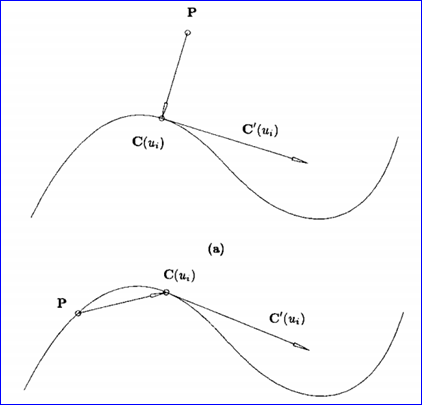
Figure 4.2 Point projection and Point inversion
需要强调的是使用Newton方法,一个好的初值对于迭代的收敛性及收敛速度是非常重要的。现在假设已经确定了初值u0,利用数量积定义函数:

不管P点是否位于曲线上,当f(u)=0时,点P到C(u)的距离达到最小。对f(u)求导得:

代入Newton迭代公式得:

在OpenCASCADE中曲线点的反求主要是使用了派生自math_FunctionWithDerivative的类Extrema_PCFOfEPCOfExtPC,类图如下所示:
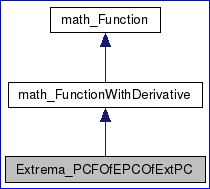
Figure 4.3 class diagram for point inverstion
所以需要实现三个纯虚函数Value(), Derivative(), Values(),将其实现代码列出如下所示:
Standard_Boolean Extrema_FuncExtPC::Value (const Standard_Real U, Standard_Real& F)
{
if (!myPinit || !myCinit) Standard_TypeMismatch::Raise();
myU = U;
Vec D1c;
Tool::D1(*((Curve*)myC),myU,myPc,D1c);
Standard_Real Ndu = D1c.Magnitude();
if (Ndu <= Tol) { // Cas Singulier (PMN 22/04/1998)
Pnt P1, P2;
P2 = Tool::Value(*((Curve*)myC),myU + delta);
P1 = Tool::Value(*((Curve*)myC),myU - delta);
Vec V(P1,P2);
D1c = V;
Ndu = D1c.Magnitude();
if (Ndu <= Tol) {
Vec aD2;
Tool::D2(*((Curve*)myC),myU,myPc,D1c,aD2);
Ndu = aD2.Magnitude(); if(Ndu <= Tol)
return Standard_False;
D1c = aD2;
}
} Vec PPc (myP,myPc);
F = PPc.Dot(D1c)/Ndu;
return Standard_True;
}
//============================================================================= Standard_Boolean Extrema_FuncExtPC::Derivative (const Standard_Real U, Standard_Real& D1f)
{
if (!myPinit || !myCinit) Standard_TypeMismatch::Raise();
Standard_Real F;
return Values(U,F,D1f); /* on fait appel a Values pour simplifier la
sauvegarde de l'etat. */
}
//============================================================================= Standard_Boolean Extrema_FuncExtPC::Values (const Standard_Real U, Standard_Real& F, Standard_Real& D1f)
{
if (!myPinit || !myCinit) Standard_TypeMismatch::Raise();
myU = U;
Vec D1c,D2c;
Tool::D2(*((Curve*)myC),myU,myPc,D1c,D2c); Standard_Real Ndu = D1c.Magnitude();
if (Ndu <= Tol) {// Cas Singulier (PMN 22/04/1998)
Pnt P1, P2;
Vec V1;
Tool::D1(*((Curve*)myC),myU+delta, P2, V1);
Tool::D1(*((Curve*)myC),myU-delta, P1, D2c);
Vec V(P1,P2);
D1c = V;
D2c -= V1;
Ndu = D1c.Magnitude();
if (Ndu <= Tol) {
myD1Init = Standard_False;
return Standard_False;
}
} Vec PPc (myP,myPc);
F = PPc.Dot(D1c)/Ndu;
D1f = Ndu + (PPc.Dot(D2c)/Ndu) - F*(D1c.Dot(D2c))/(Ndu*Ndu); myD1f = D1f;
myD1Init = Standard_True;
return Standard_True;
}
根据代码可知,实现原理与上述一致。下面给出一个简单的例子,来说明及方便调试点的反求算法。示例程序代码如下所示:
/*
* Copyright (c) 2014 eryar All Rights Reserved.
*
* File : Main.cpp
* Author : eryar@163.com
* Date : 2014-10-20 18:52
* Version : 1.0v
*
* Description : Test OpenCASCADE function root algorithm.
*
* Key words : OpenCascade, Extrema, Newton's Method
*/ #define WNT #include <math_FunctionRoots.hxx>
#include <math_NewtonFunctionRoot.hxx> #include <Extrema_PCFOfEPCOfExtPC.hxx> #include <GC_MakeCircle.hxx> #include <GeomAdaptor_Curve.hxx> #pragma comment(lib, "TKernel.lib")
#pragma comment(lib, "TKMath.lib")
#pragma comment(lib, "TKG3d.lib")
#pragma comment(lib, "TKGeomBase.lib") void TestExtrema(void)
{
Handle_Geom_Curve aCircle = GC_MakeCircle(gp::XOY(), 2.0); GeomAdaptor_Curve aCurve(aCircle); Extrema_PCFOfEPCOfExtPC aFunction(aCircle->Value(0.123456789), aCurve); math_FunctionRoots aSolver1(aFunction, -2.0, 2.0, );
math_NewtonFunctionRoot aSolver2(aFunction, 0.0, 0.0, 0.0); aSolver1.Dump(std::cout);
std::cout << "========================================" << std::endl;
aSolver2.Dump(std::cout);
} int main(int argc, char* argv[])
{
TestExtrema(); return ;
}
根据圆上一点,求出对应的参数值,计算结果如下所示:
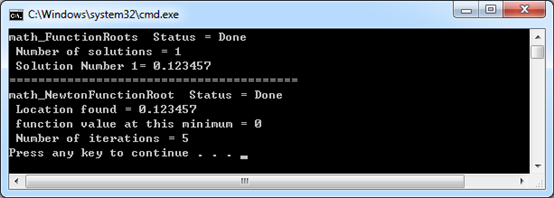
5.Conclusion
Newton法可以选作对导数能有效求值,且导数在根的邻域中连续的任何函数方程的求根方法。Newton法在单根邻近收敛快,精度高,具有二阶收敛速度,但Newton法对初值要求比较高,即要求初值选取充分靠近方程的根,否则Newton法可能不收敛。
OpenCASCADE的math包中提供了求根的几种实现算法,虽然代码有些乱,但是这种抽象的思想还是相当不错的,便于扩展应用。理解了math_FunctionRoot的算法,进而可以理解从math_FunctionWithDerivative派生的类的原理了。
通过曲线上点的反求问题引出使用求根算法的具体实例,从中可以看出关键还是要将实际问题抽象成一个方程。有了方程,根据Newton迭代公式,求出相应的值和导数值,就可以得到方程的高精度的根了。
对数值算法感兴趣的读者,可以参考《计算方法》、《数值分析》等相关书籍,从而可以在理解OpenCASCADE的代码的基础上,可以自己来实现相关算法。
6. References
1. 数学手册编写组. 数学手册. 高等教育出版社. 1979
2. 赵罡,穆国旺,王拉柱译. 非均匀有理B样条. 清华大学出版社. 2010
3. Les Piegl, Wayne Tiller. The NURBS Book. Springer-Verlag. 1997
4. 易大义,沈云宝,李有法编. 计算方法. 浙江大学出版社. 2002
5. 易大义,陈道琦编. 数值分析引论. 浙江大学出版社. 1998
6. 李庆杨,王能超,易大义.数值分析.华中理工大学出版社. 1986
7. 同济大学数学教研室. 高等数学(第四版). 高等教育出版社. 1996
8. Newton's Method video:
http://v.163.com/movie/2006/8/T/V/M6GLI5A07_M6GLLGSTV.html
9. http://en.wikipedia.org/wiki/Root-finding_algorithm
10. http://mathworld.wolfram.com/Root-FindingAlgorithm.html
11. http://mathworld.wolfram.com/NewtonsMethod.html
PDF Version: OpenCASCADE Root-Finding Algorithm
OpenCASCADE Root-Finding Algorithm的更多相关文章
- HDU4889 Scary Path Finding Algorithm
Fackyyj loves the challenge phase in TwosigmaCrap(TC). One day, he meet a task asking him to find sh ...
- HDU 4889 Scary Path Finding Algorithm
其实这个题是抄的题解啦…… 题解给了一个图,按照那个图模拟一遍大概就能理解了. 题意: 有一段程序,给你一个C值(程序中某常量),让你构造一组数据,使程序输出"doge" 那段代码 ...
- Intersection between 2d conic in OpenCASCADE
Intersection between 2d conic in OpenCASCADE eryar@163.com Abstract. OpenCASCADE provides the algori ...
- Intersection between a 2d line and a conic in OpenCASCADE
Intersection between a 2d line and a conic in OpenCASCADE eryar@163.com Abstract. OpenCASCADE provid ...
- OpenCASCADE 3 Planes Intersection
OpenCASCADE 3 Planes Intersection eryar@163.com Abstract. OpenCASCADE provides the algorithm to sear ...
- Class loading in JBoss AS 7--官方文档
Class loading in AS7 is considerably different to previous versions of JBoss AS. Class loading is ba ...
- Matlab 中S-函数的使用 sfuntmpl
function [sys,x0,str,ts,simStateCompliance] = sfuntmpl(t,x,u,flag) %SFUNTMPL General MATLAB S-Functi ...
- [Swift]LeetCode990. 等式方程的可满足性 | Satisfiability of Equality Equations
Given an array equations of strings that represent relationships between variables, each string equa ...
- 32 Profiling Go Programs 分析go语言项目
Profiling Go Programs 分析go语言项目 24 June 2011 At Scala Days 2011, Robert Hundt presented a paper titl ...
随机推荐
- Hive 笔记
DESCRIBE EXTENDED mydb.employees DESCRIBE EXTENDED mydb.employees DESCRIBE EXTENDED mydb.employees ...
- bootstrap之伪元素
bootstrap之伪元素 参考地址:http://www.cnblogs.com/keyi/p/5943178.html http://www.runoob.com/css/css-pseudo-e ...
- bootstrap按钮样式
<a class='btn' href='javascript:;'>常规按钮</a> <a class='btn btn-small' href='javascript ...
- [原创]MySQL innodb_rollback_on_timeout参数对锁的影响
环境:Server version: 5.6.21-log MySQL Community Server (GPL) 前提提要: innodb_rollback_on_timeout是 ...
- 使用html5 地理位置技术 和 百度地图api查询当前位置
使用了 zepto 和 requirejs define(['zepto'],function($){ var geolocation = { init:function(config,onSuc ...
- Linux 系统的初始化配置
1.零时配置网卡IP地址 2.配置永久生效IP地址 需要进如 cd /etc/sysconfig/network-scripts 找到网卡文件编辑 3.零时主机名的更改. 4.永久主机名的更 ...
- Wine——在Linux上运行Windows软件
官网:https://www.winehq.org/ 参考: wikipedia 教你使用Wine在Linux上运行Windows软件 如何安装和使用Wine,以便在Linux上运行Windows应用 ...
- PHP的日期和时间处理函数
1. 将日期和时间转变为时间戳 1.1 time() 原型:time(void) 作用:返回当前时间的 UNIX时间戳. 参数:void,可选(即无参数) 1.2 mktime() 原型:int mk ...
- 代码自定义双色title的按钮
所图所示,通过代码自定义这样的按钮. .h文件 // // CustomButtom.h // testPlus // // Created by 鹰眼 on 14/10/20. // Copyrig ...
- ajax优点与缺点
ajax的优点 Ajax的给我们带来的好处大家基本上都深有体会,在这里我只简单的讲几点: 1.最大的一点是页面无刷新,在页面内与服务器通信,给用户的体验非常好. 2.使用异步方式与服务器通信,不需要打 ...
